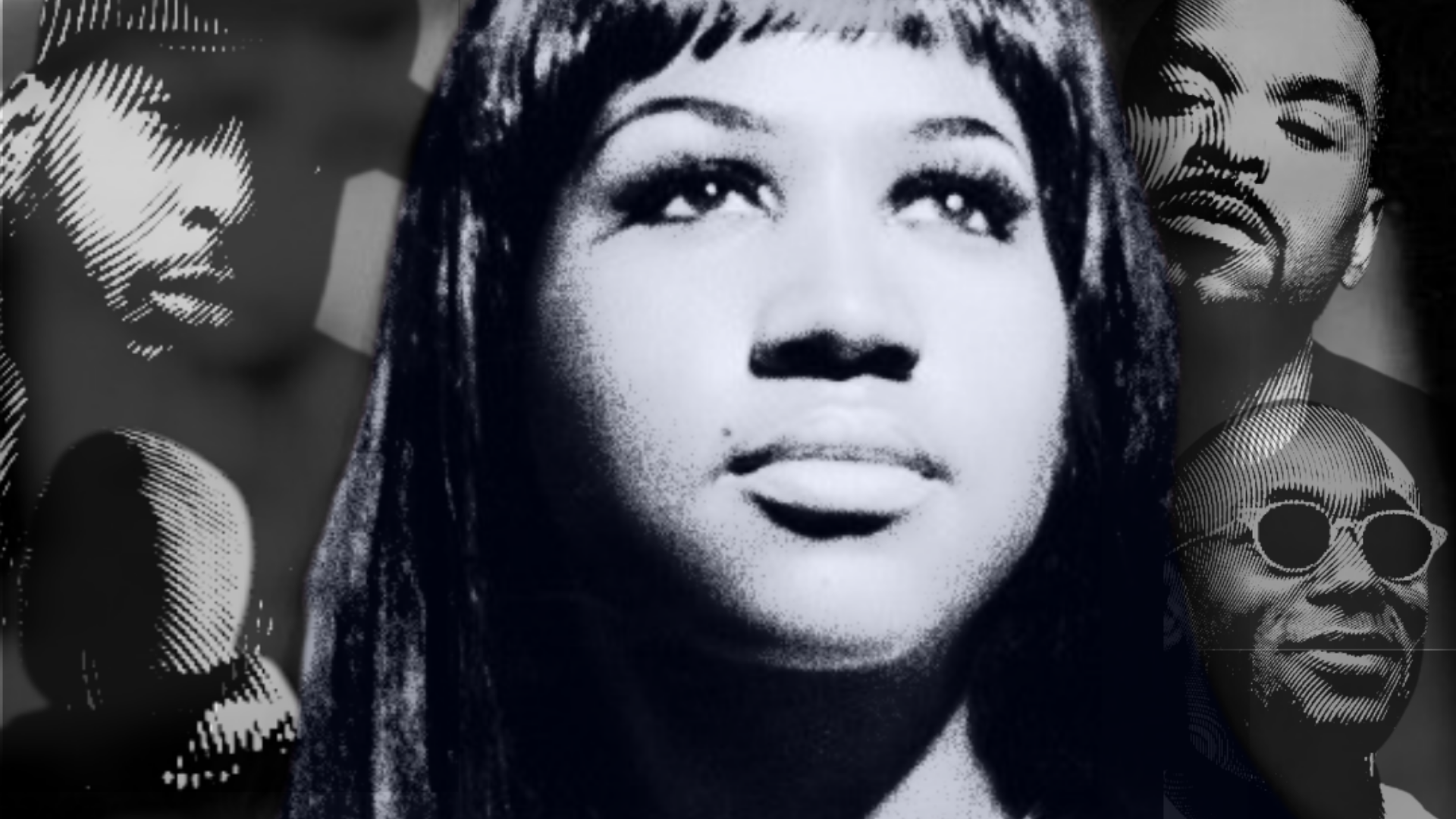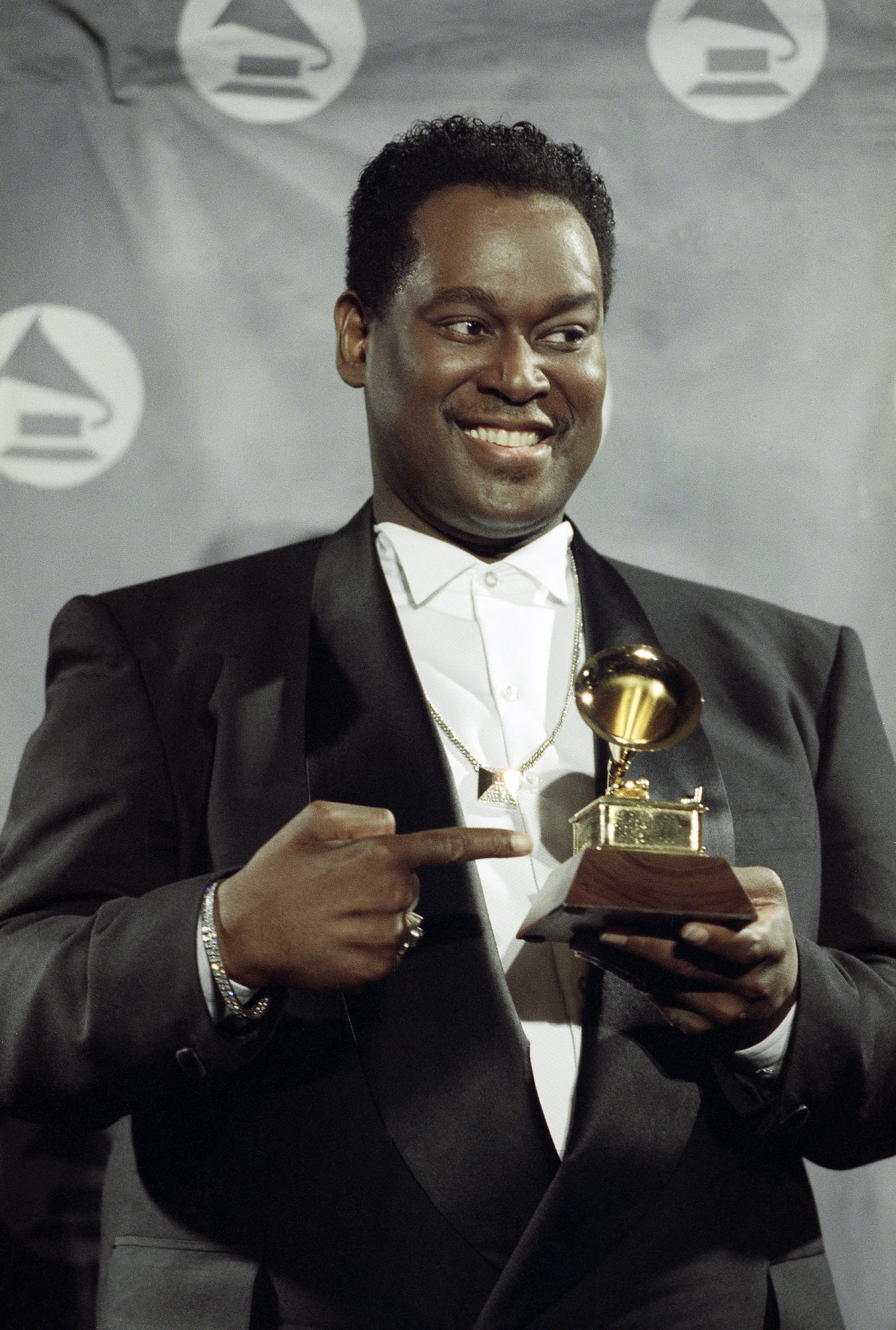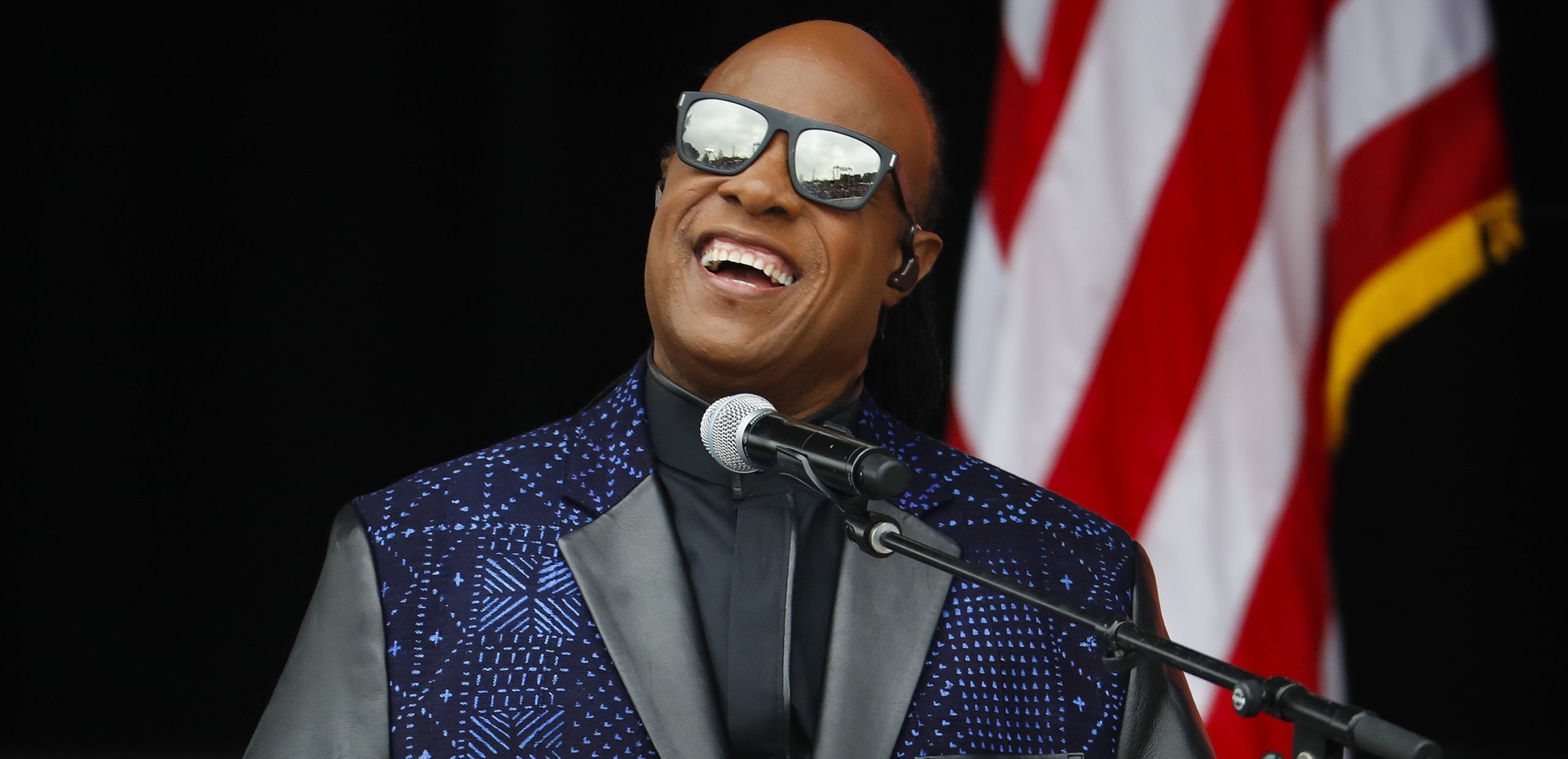The history of R&B is well documented. Though the genre doesn’t spark as much spirited discussion as hip-hop, there is still a lot to discuss—and a lot to listen to.
To start, R&B (also known as Rhythm and Blues) is a derivative of the jump blues, an up-tempo style of blues usually played by bands. As far as that distinct sound born from gospel and blues, R&B began to surface in the ’40s. The term “R&B” was coined in 1949 by Billboard Magazine reporter Jerry Wexler (who later became a record producer) to designate upbeat popular music performed by Black artists that combined blues, jazz, and gospel. At the time, music created by Black artists was often referred to as “race music,” which was obviously offensive (and trite). So, enter Wexler’s “R&B”—in short, it was a marketing term.
While R&B is vast and diverse in sound, one of the earliest styles of R&B was Doowop. One of the genre’s earliest singer/songwriters was Louis Jordan, a bandleader and saxophonist who composed the 1944 song, “Is You Is or Is You Ain’t My Baby.” Some of R&B’s earliest groups were The Cardinals, The Drifters, The Swallows, and more.
R&B, like all Black music in America, has deep roots and a multifaceted story, but we could probably play it better than explain it. So, here are 25 classic albums that tell the story of rhythm & blues. This is not a definitive list—just a casual guide.
The 50s
This was the decade when R&B started to be discovered on a mainstream level. As it developed into its own genre, artists still incorporated heavy elements of blues and rock. This was also the era when artists began to release albums in the genre through record labels.

1. Ray Charles
Atlantic Records released Ray Charles’ self-titled album (later retitled Hallelujah I Love Her So) in July 1957. It was among the first albums released by Atlantic and established Charles, a singer, songwriter, and performer, as a force in the nascent genre. Hits from the album include “Mess Around”, “Hallelujah I Love Her So” and more. You can hear the heavy blues influence in Charles’ work throughout his career.
2. Miss Rhythm
Ruth Brown began releasing albums on Atlantic Records in 1956, but her 1959 album, Miss Rhythm, is considered a standard for albums at this time and in this genre. It was a collection of new music as well as B-sides from some of her previous releases. She had a diverse vocal range that she didn’t hesitate to show off as she went from a sultry falsetto to her middle and lower registers with ease.
3. Sam Cooke
Sam Cooke, who is sometimes referred to as “the father of soul music,” started out singing gospel, like a lot of Black artists. But his self-titled album released in 1958 took a turn toward secular music. This is the album that introduced us to timeless classics like, “You Send Me,” which was his first hit, “When I Fall in Love,” and more.
4. Please Please Please
James Brown is known as “the godfather of soul” for good reason. He infused blues, rock, and gospel into his songs and brought showmanship, fancy footwork, boisterous vocal riffs, and unique and intricate drum patterns that are still sampled in hip-hop to this day. Please Please Please was the first album he released on the label Chronicles/Polydor in 1959.
5. Clyde McPhatter & The Drifters
The Drifters were one of the earliest groups to adopt R&B. Their self-titled debut album under the group’s first moniker, Clyde McPhatter & the Drifters, came out in 1956. Clyde McPhatter ended up leaving the group but not before recording “White Christmas,” one of their most classic songs. “White Christmas” introduced the concept of popular Christmas music—songs that didn’t sound like the typical cheesy carols or show tunes.
60s
The 1960s saw the rise of Motown (which was founded by Berry Gordy in 1959) and a transformation in R&B. The sound moved away from blues and gospel and established its own identity as “soul.”
6. Motown
Motown put 79 records on the top-ten list of the Billboard Hot 100 between 1960 and 1969. This period introduced the world to The Supremes, Stevie Wonder, The Temptations, The Jackson Five, The Marvelettes and more. There is so much to dig into when it comes to Motown that it’s impossible not to reference at least several artists here.
7. I Never Loved a Man The Way I Love You

Aretha Franklin transitioned from secular music to R&B in the 60s. Her 1967 release, I Never Loved a Man the Way I Love You, featured some of her most popular songs, like her remake of Otis Redding’s “Respect” (which Redding also wrote), “Do Right Woman, Do Right Man”, a remake of Sam Cooke’s “A Change is Gonna Come” and more.
8. Hot-Buttered Soul
Isaac Hayes’ sophomore album is often recognized as a landmark in soul music because it established Hayes and the Bar-Kays as major players in music. “Walk on By,” the 12-minute album opener, is one of Hayes’ most iconic songs and is still considered a masterpiece.
9. High Priestess of Soul
Nina Simone was a genre-bending genius. Her 1967 release, I Hold No Grudge, is characteristic of a lot of her previous work—a fusion of some blues, jazz, soul, and gospel.
10. Otis Blue: Otis Redding Sings Soul
Otis Redding’s career was cut short by a plane crash in 1967. But before his untimely demise, he left a prolific catalog that included his own hits as well as songs he’d penned for others.
70s
R&B was booming in the 70s as soul music was led by groups like The Whispers, The Spinners, Patti LaBelle and the Bluebelles, as well as Motown talent. Amid the rising force that was disco and then hip-hop toward the end of the decade, the iconic label still had a stronghold in the industry.
11. Innervisions
This is Stevie Wonder’s 16th album in what many people felt was his golden era. He released a slew of albums in the 70s, and here he tapped into faith but also current events and the political turmoil of the times.

12. What’s Going On
The content of Marvin Gaye’s socially conscious masterpiece still applies to today.
13. Rufus & Chaka Khan
Rufus & Chaka Khan are one of the best pairings in Black music history. They skillfully fused funk, R&B, soul and touches of hip-hop later on.
14. Curtis
Curtis Mayfield’s self-titled debut album was full of psychedelic soul. It was a sonic trip that made you feel like you were floating through space with a grounded message steeped in Mayfield’s love for Black people.
15. Back Stabbers
The O’Jays made magic with Gamble and Huff and cemented Philadelphia as a hub for brilliant musical talent. Back Stabbers wasn’t their first album, but it was the album that marked a turning point in their careers with multiple hits that made the group a household name.
80s
80s R&B ushered in the synthesizer, New Jack Swing, and a nascent genre known as rap.
16. Candy Girl
New Edition made their intro in 1983 with syrupy sweet tunes innocent enough for kids but catchy enough for everyone. The group was a new-school homage to the Jackson 5.
17. Rhythm Nation 1814
This is one of Janet Jackson’s most seminal projects. She was a few albums in by this point, had more creative control, and was establishing herself as an independent woman. The album offered classy catchy tunes with visuals to match, in addition to protest songs, social commentary, and ballads that have aged extremely well.
18. Thriller
Michael Jackson’s Thriller spawned several hits and subsequent timeless classics like “Billie Jean”, “Beat It”, “Thriller”, “Human Nature”, and more. It marked the beginning of the decade that Michael took over as a solo artist, and this album in particular is one of the best-selling albums of all time.
19. Private Dancer
This album marked a time in Tina Turner’s life when she had freed herself from an abusive marriage and was figuring out what her career would look like moving forward. Turner moved into her own sound and style and relaunched as a solo artist in her 40s. At that time, it was unheard of for a woman of that age to reset the way she did, but Tina’s bravery set the standard for pop rock and R&B.

20. Never Too Much
Luther Vandross, also known as “Loofa,” was one of the smoothest balladeers to ever do it. This particular album gave the world the classics “Never Too Much” and “A House is Not a Home.”
90s
The 90s saw a lot of R&B and hip-hop collabs and the rise of “Neo Soul” toward the end of the decade. For many Millennials, the 90s was the best decade for R&B. There’s a reason why that meme “If the love don’t feel like 90s R&B, then I don’t want it” stays in circulation.
21. My Life
Mary’s sophomore album established the young chanteuse as one with a heavy heart who shared her pain like an open book. Her music also established that hip-hop and R&B collaborations were a viable sound that listeners loved.

22. Forever My Lady
The 90s was the decade that saw boy bands and girl bands explode, but Jodeci reset the standard. A lot less polished than R&B bands of yore, they made it cool to be rough around the edges and heavily influenced bands who came after them—vocally and visually.
23. One in a Million
Aayliah worked with Timbaland and Missy to introduce a new sound to R&B, one that was inspired by trip-hop. At that time, it was unlike anything we had previously heard.
24. Crazy Sexy Cool
The world had been introduced to TLC in the earlier part of the decade. They fused hip-hop, R&B, and New Jack swing into masterful tunes with the help of stellar producers like Babyface and Dallas Austin. Their sophomore album was smoother than the debut, with less hip-hop, more R&B, and hilarious skits.
25. Destiny’s Child
The generally accepted origin story of Destiny’s Child starts when they were nine. But the real story of how they became a national sensation starts with a remix. Thanks to Wyclef’s production and Beyonce’s quick rap singing, their first single “No No No Part 2” eclipsed the original, slower version of the song and launched a new style of singing in R&B.
2000s and beyond
The story of R&B runs deep. Early 2000’s R&B saw a continuation of the 90’s sound, and present-day artists like Lucky Daye, SZA, and Masego dominate conversations regarding who’s who. Rappers, too, are singing a lot more than they used to—even ones who can’t sing—because popular music these days has taken on a more pop and melodic vibe.
Who knows what’s to come for R&B? As a sound that plays so well with others, the possibilities for transformation are endless. One thing is for sure – it has come a long way from jump blues, and the genre is still jumping.




